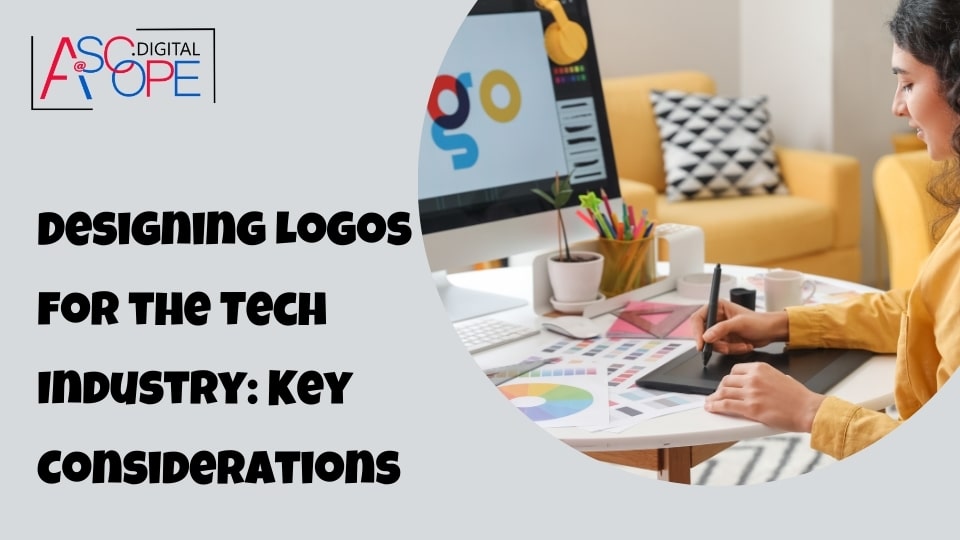Logos are the face of a brand, encapsulating its identity, values, and mission in a simple visual symbol. In the fast-paced and ever-evolving tech industry, a logo must convey innovation, reliability, and forward-thinking. This article explores the key considerations for designing logos specifically for tech companies, highlighting essential elements that can make a logo stand out in a crowded market.
Understanding the Tech Industry
Before diving into design specifics, it’s crucial to understand the unique aspects of the tech industry. The sector is characterized by rapid innovation, high competition, and a focus on cutting-edge technology. Tech companies range from software developers to hardware manufacturers, each with distinct branding needs. Therefore, a deep understanding of the company’s niche, target audience, and market positioning is essential for effective logo design.
Research and Inspiration
The first step in designing a logo for a tech company is thorough research. Look at what competitors are doing and identify trends within the industry. Research can provide valuable insights into what works and what doesn’t, helping designers to create something unique yet industry-appropriate. Sources of inspiration can include technology trends, futuristic elements, and the company’s core values.
Simplicity and Modernity
Simplicity is a hallmark of great logo design, and this is especially true in the tech industry. A simple logo is easy to recognize and remember, which is crucial for brand recognition. Modern design elements, such as clean lines, minimalism, and geometric shapes, often resonate well with tech audiences. These elements can convey a sense of innovation and efficiency, key attributes for any tech company.
Versatility
A tech company’s logo needs to be versatile, capable of adapting to various applications. It should look good on a small mobile app icon and a large billboard. Scalability and flexibility are essential considerations during the design process. Designers should create vector-based logos that maintain quality across different sizes and mediums.
Color Psychology

Colors play a significant role in logo design, influencing perception and emotional response. In the tech industry, blue is a popular choice as it conveys trust, reliability, and professionalism. However, other colors like green, which signifies growth and innovation, or orange, which suggests creativity and enthusiasm, can also be effective. Understanding color psychology and choosing a palette that aligns with the company’s brand values is crucial.
Typography
Typography is another critical element in logo design. The font used should be legible, scalable, and reflect the brand’s personality. For tech companies, sans-serif fonts are often preferred due to their modern and clean appearance. Custom typography can also be a great way to create a unique and recognizable logo.
Symbolism and Iconography
Symbols and icons can be powerful tools in logo design. They can communicate complex ideas quickly and effectively. In the tech industry, common symbols include gears, circuit boards, and abstract shapes that suggest connectivity and innovation. However, it’s important to avoid clichés and strive for originality. The symbol should be relevant to the company’s specific niche and values.
Incorporating Technology Themes
Incorporating technology themes into the logo can help convey the industry focus of the company. This might include elements like circuit patterns, binary codes, or abstract representations of digital concepts. These themes should be subtly integrated to enhance the logo’s relevance without overwhelming its simplicity and clarity.
Future-Proofing the Design
The tech industry evolves rapidly, and a logo must remain relevant as trends change. Future-proofing a logo involves creating a design that is timeless yet adaptable. Avoiding overly trendy elements can help ensure the logo remains effective for years to come. It’s also wise to design with potential updates in mind, allowing for minor tweaks that can keep the logo fresh without a complete overhaul.
Collaboration and Feedback
Logo design is a collaborative process that benefits from multiple perspectives. Engaging stakeholders, including company executives, employees, and even customers, can provide valuable feedback. Iterative design processes, where concepts are refined based on feedback, often lead to stronger final designs.
Case Studies of Successful Tech Logos

Examining successful tech logos can provide practical insights into effective design strategies. Companies like Apple, Google, and Microsoft have iconic logos that are simple, versatile, and memorable. Analyzing what makes these logos successful can offer valuable lessons for new logo designs.
Apple: The Power of Simplicity
Apple’s logo is a perfect example of simplicity and elegance. The bitten apple is instantly recognizable and conveys a sense of sophistication and innovation. Its monochromatic color scheme and minimalistic design have made it a timeless symbol in the tech industry.
Google: Playful and Dynamic
Google’s logo stands out with its playful use of colors and clean typography. The use of primary colors conveys a sense of approachability and creativity. Google’s logo has evolved over the years, yet it has maintained its core elements, showing how a logo can be updated while preserving its essence.
Microsoft: Strong and Versatile
Microsoft’s logo is a testament to versatility and strength. The four-color window symbol represents diversity and the company’s broad range of products. The use of simple geometric shapes and a clean font reflects the brand’s professionalism and reliability.
Avoiding Common Pitfalls
While designing a logo for the tech industry, it’s important to avoid common pitfalls. Overcomplicating the design, relying too heavily on trends, and ignoring the brand’s core values can lead to ineffective logos. A well-designed logo should be simple, timeless, and reflective of the company’s identity.
Finalizing the Logo Design
Once a design is chosen, it’s essential to finalize the logo with attention to detail. This includes ensuring the logo looks good in black and white, testing it across different mediums, and creating a comprehensive brand guide that outlines usage guidelines. Consistency in logo usage helps build brand recognition and trust.
Enhancing Visibility and Engagement with a Strategic Logo Design
A well-crafted logo does more than just represent your brand; it serves as a powerful tool to enhance visibility and engagement. In the tech industry, where competition is fierce, a unique and memorable logo can make a significant difference. By incorporating modern design elements that reflect innovation and forward-thinking, your logo can attract potential customers and build trust in your brand. Additionally, a strategically designed logo can improve user experience by being easily recognizable and adaptable across various platforms and devices. This consistency not only reinforces brand identity but also boosts user engagement. Thus, improving traffic and sales for your website. Read more on the other reasons why your website isn’t getting traffic. Investing in a professional logo design tailored to the tech industry’s dynamic nature is a crucial step toward standing out in a crowded market and driving long-term success.
Conclusion
Designing a logo for the tech industry involves a careful balance of simplicity, modernity, and relevance. By understanding the unique aspects of the industry, incorporating key design elements, and avoiding common pitfalls, designers can create logos that effectively represent tech companies. A well-designed logo not only enhances brand recognition but also communicates the company’s values and mission, helping it stand out in a competitive market


